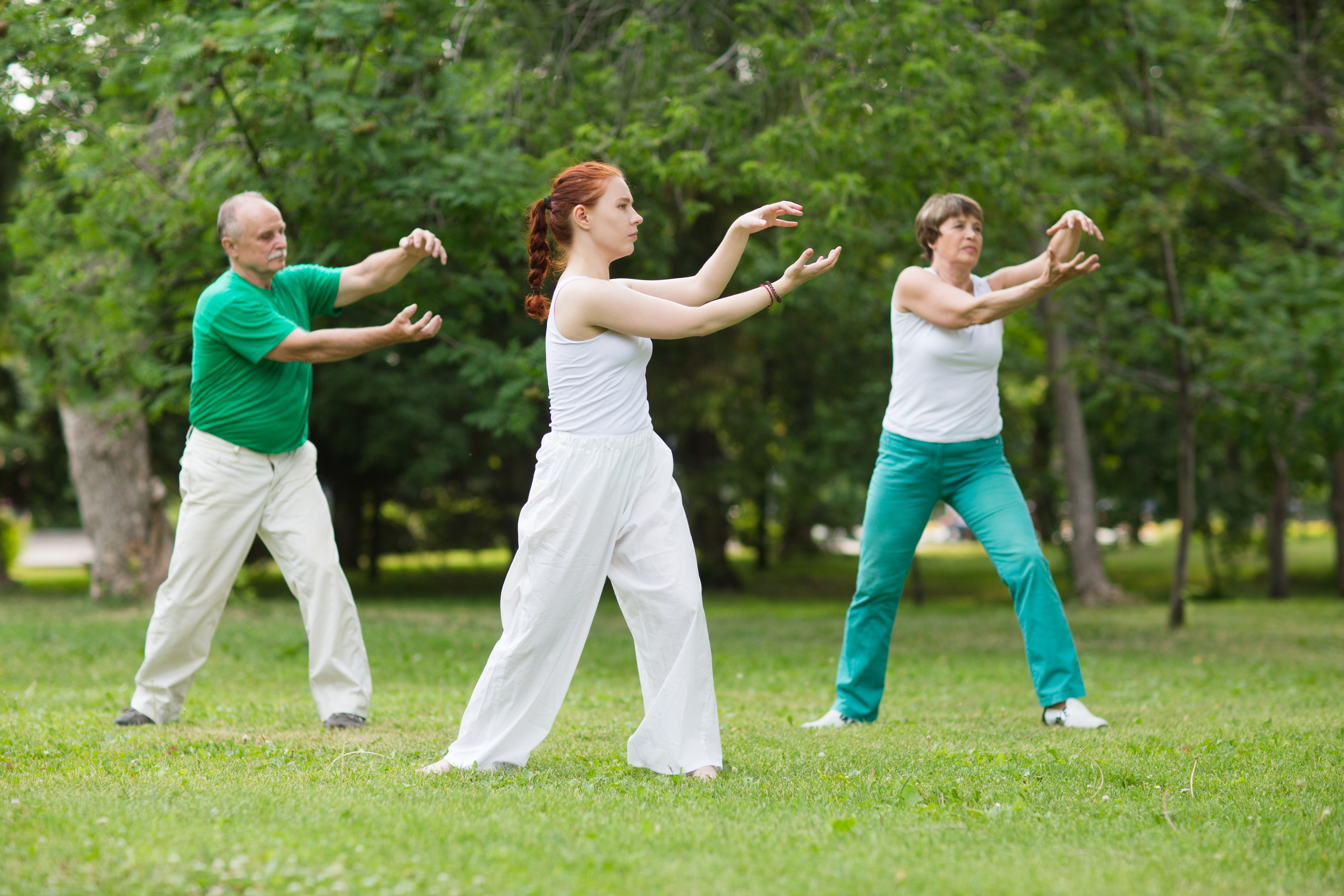
Body awareness and mindfulness have received a lot of attention in recent years. Research has shown there are important benefits for mental and physical health. For example, pain reduction and improved immune function, leading to increased rates of healing. Also, better relationships with others and oneself.
Mind body exercises, such as Tai Chi and Qigong, encourage the body and the mind to be more resilient. Over time, participants can become more attuned with their deeper feelings and emotions. This can lead to an improved sense of well-being.
These body awareness and mindful movement practices use forms and postures to execute a movement, activity or exercise. Importantly, postural control and visualization have a great impact on one’s physical condition but there are also great benefits for mental health.
The mind body connection
Tai Chi and Qigong practice helps to bring focus. That is to say, by tuning in to the body without judgement or overthinking, the mind notices subtle shifts and changes. Becoming aware of tension in the body, we are able to consciously release it. We can also become aware of aspects such as energy, balance, postural alignment or breathing. This awareness allows us to deeply concentrate, relax our minds, and still our thoughts.
Tai Chi has a relaxed, flowing form. The slow, deliberate movement allows us to focus our mind and intentions. Moving in a slow even pace with attention to detail, we become aware of the sensations present in our mind and body systems.
Inner awareness is an important aspect in Tai Chi and Qigong. In today’s world, it can be difficult to sustain. However, these practices encourage you to look inward. Through self-awareness, they help to improve the quality of daily life. The benefits can include a calm mind, reduced stress and better health.
Why are Tai Chi movements so slow?
By practicing Tai Chi and/or Qigong slowly, we re-establish the connection between our mind and our body. We focus our intent, awareness, and direction towards our body, our feet, our hands, etc. The result is greater balance, and improved awareness, posture, and coordination. Slow movements help strengthen your muscles without a huge amount of work.
Moving slowing can feel awkward at first. That’s because it requires coordination, balance, flexibility and timing. But over time, with regular practice, you are able to enhance your awareness of your body, its sensations, your breath, your mind, and yourself. When you move quickly, you miss these things!
You can’t take relaxed, slow, deep breaths when you move quickly. It would also be very difficult to integrate your breath with faster movements.
Slow relaxed movements help you to enter a meditative state which enhances the smoothness and fluidity of your movements and gives you greater control over them. The parasympathetic nervous system is able to do its job. The body becomes energized and develops a sense of calm
It’s all about the journey
Very often, Tai Chi and Qi Gong are taught and practiced like western calisthenics. However, this is a misperception. They are not just about the muscles and joints. By exploring our self in stillness and motion we get to know ourselves intimately. Only we can feel the feedback our mind receives from physical movement.
Therefore it is more important to focus on the “journey” through each movement. This means taking the time to fully experience every aspect. Noticing the opening and closing. Sensing the stretching. Being aware of the turning, the rising and falling. Doing this though each and every movement.
“Learning how to harmonize body, breath, and mind is Qigong, not learning 100,000 different exercises.There is a different between seeking health of body and mind and how many heavy rocks we can lift above our heads repeatedly.” Sifu Keni Lee Burgess
If we don’t focus on deep internal sensations rising and falling inside our body, which usually happens when starting out, the feelings may only be superficially located in the muscles and joints. This results in feelings of instability, awkwardness, tension, resistance, restriction, and even slight achiness and mild pain. This can be improved through experimenting with the instruction we receive from a teacher or with guidance from an experienced practitioner.
Practice is not meant to be a performance of focusing on doing it right to reach a goal. It is the journey, not the destination. We get the benefit while we are doing it and improve over time by applying ourselves mentally and physically every time we practice.
Our wellbeing programme offers a daily choice of body awareness and mindful movement practices.
